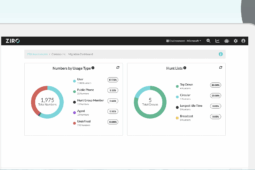Transform how you Interact with your Customers Using Cisco UCCX.
Like most Cisco Unified Communications customers with the need to support some form of contact center within their organizations, you may have most likely deployed Cisco Unified Contact Center Express (UCCX), or perhaps its big brothers Packaged Contact Center Enterprise (PCCE) or Unified Contact Center Enterprise (UCCE). And again, like most Cisco contact center deployments, you have most likely initially focused on the essentials: getting your agents to answer customer calls! Now that this is out of the way, it’s time to take a deeper look under the hood of your Cisco contact center platform and realize its true potential: it can completely transform how you interact with your customers.
Although PCCE and UCCE platforms are great, this article will focus on UCCX. With the capacity to support 400 agents and as many concurrent IVR ports, UCCX fits most small and medium-sized organizations. At its core, it consists of four main modules all within the same box: an Interactive Voice Response (IVR) system, an Automatic Call Distribution (ACD) engine, a set of applications for Computer Telephony Integration (CTI), and a Reporting platform. At first glance, this may all seem relatively standard. However, what sets UCCX apart is its flexibility; at Stack8, we consider UCCX to be closer to a Telephony Application Development platform than a contact center product.
This is the first post in a three-part series, where we will review the full range of possibilities with the Cisco UCCX platform. Let’s begin with a quick overview of UCCX, its self-service IVR, the IVR admin/dashboard, and the wallboard. The second post will cover custom reports, CTI integrations (and automation), ACD: backup queues / overflow, position in the queue, callbacks in the queue, and outbound calling. The final post will finish up with chat and email, context-aware services, and WFO (recording/quality management, workforce management).
Intro, Interactive Voice Response & Wallboard
Agents? What agents?
Most contact centers involve at least some form of basic IVR (AKA “menu tree”, “phone pyramid”, “auto-attendant”… we’ve heard them all!) – the idea being to steer callers towards the agents best suited to answer their particular request. In high-volume call centers, this effectively means a proportionally large quantity of agents will be required to handle all those calls. For many simple or quick interactions, however, where an agent is simply required to lookup and share certain types of information with a caller (status of an order, account balance, price of an item, etc.), these interactions can be completely automated, thus freeing agents for answering more complex or value-added calls.
UCCX provides the opportunity for building an incredibly wide range of self-service applications. Integrations with third-party systems, such as a CRM, an ERP, and others can be achieved through many different approaches: REST calls, standard Web POST or GET requests, direct database dips, etc. Coupled with its native basic Text-to-Speech engine for relaying the data fetched from the database to the caller, UCCX has all of the built-in features to create self-service IVRs for most applications. Given that it can also easily integrate with more advanced full grammar Text-to-Speech or Speech Recognition engines, such as those from Nuance, there are virtually no limits as to what can be developed using UCCX as the foundation for self-service telephony applications.
We Don’t Need No IT
It’s 5pm the day before a major statutory holiday, and your contact center folks reach out to you in panic for changing their hours of operation for tomorrow. Or there’s an outage with your website and your contact center supervisors are begging you to add a prompt to your IVR to advise customers of the outage before reaching the queue. Or there’s an important team meeting about to start and the contact center needs to switch to night service in the middle of the day. Sounds familiar? In traditional contact centers, all of those situations can typically only be fixed by IT, due to the complexity of modifying contact center scripts and to the security implications of granting supervisors administrative access to the contact center platform.
Similar to self-service IVR applications built for customers, as described above, UCCX also enables the creation of administrative IVR applications which can allow specific internal users to instantly modify the behavior of their contact center. As an example, a contact center supervisor could call a specific number, externally accessible or not, enter a PIN for security purposes, and be prompted to enable or disable certain features such as meeting or emergency mode, recording and activating a broadcast message, modifying patience messages… Extremely convenient for the business, supervisors can now be much more autonomous in the daily operation of the contact center, without requiring any IT intervention.
In more recent years, administrative telephony self-service applications have also been replaced by web-based dashboards to perform similar tasks. Allowing for a simpler and much quicker interaction with the contact center, enabling night service in the middle of the day or replacing a prompt in the IVR can be as easy as a few clicks through a secure web page, which directly interacts with UCCX through its APIs in the backend.
Wallboard, or Watching TV on the Job!
Out of the box, UCCX does present live statistics to users through Cisco Finesse; its primary web-based application used by contact center supervisors and agents, as well as, through Cisco Unified Intelligence Center (CUIC); its built-in reporting platform (more on this in the second installment of this blog series). In many cases, displaying Key Performance Indicators (KPIs) on larger screens within the contact center can add a very interesting new dimension to the team dynamics. With a single glance at the screen, agents can get visibility into their team’s availability and performance. A wallboard can help agents in getting an instant answer to questions such as: are there any colleagues available to cover for me while I go to lunch?; do I need to accelerate my pace because our service level is lower than it should?; is there a priority customer currently waiting in the VIP queue, and if so, how long has he been waiting?
In more modern or avant-garde contact center environments, a new concept is also quickly emerging: gamification. Directly inspired by video games, agents’ performance is increased by encouraging them to achieve specific goals in a game-like fashion: top 3 agents for the number of calls handled today, team goal to decrease average wait time to under 15 seconds, team availability throughout the day. A wallboard will play a significant role with gamification, where it will serve as a leaderboard or scoreboard of sorts, with many different kinds of visual representation available for the KPIs such as through gauges, progress indicators, badges next to agent names, as well as, animations and sounds when goals are met, etc.
Many different systems are available on the market, from the simplest grid-like display to the more advanced and fully stylized designs. Most tools will allow for the display of live metrics fetched directly from the UCCX database, while others will also provide the ability to add historical statistics on screen (weekly service level, monthly abandoned call rate, etc.). Simultaneously, the more capable solutions will even support the display of metrics or information from third-party systems, such as ticketing systems in helpdesk environments, current promotions in telemarketing centers, current service status for utility companies or telcos, live stock tickers for trading centers, and much more.
Stay tuned for the next blog post in this series, when we will cover custom reports, CTI integrations (and automation), ACD: backup queues / overflow, position in the queue, callbacks in the queue, and outbound calling.
Interested in learning more about our contact center solutions or need help implementing one of the above solutions, reach out and will be happy to discuss all possible solutions with you.
Ready to take your unified communications from headache to hassle-free?
No throwing darts at proposals or contracts. No battling through the back-end. No nonsense, no run-around.



